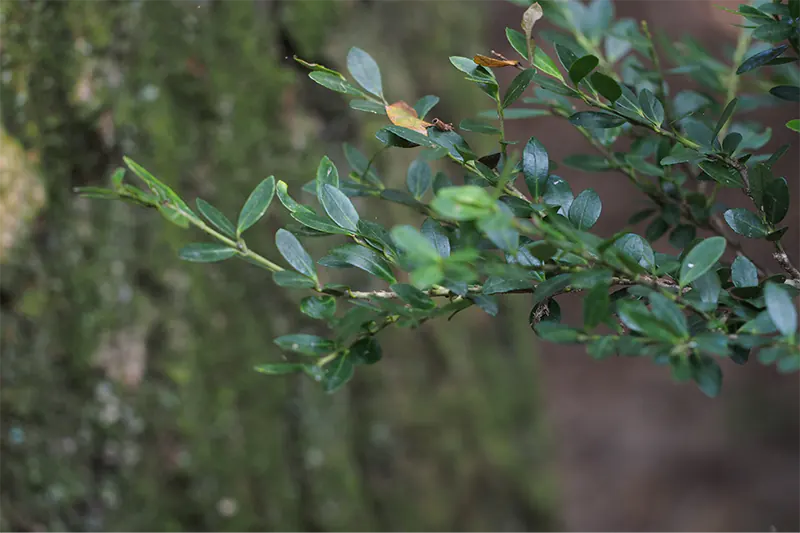Japanese Holly: Ultimate Bonsai Care Guide
Known by the scientific name Ilex crenata, the Japanese Holly is one of the most beautiful trees from the holly family, Aquifoliaceae. The evergreen tree produces green leaves for most of the year, while it has black drupes that hold up to four seeds. It’s also a stunning decorative tree that’s grown as a bonsai.
In this guide, we’ll look at the basic Japanese Holly details, how to care for it, propagating the tree using different methods, and what it’s used for in other industries.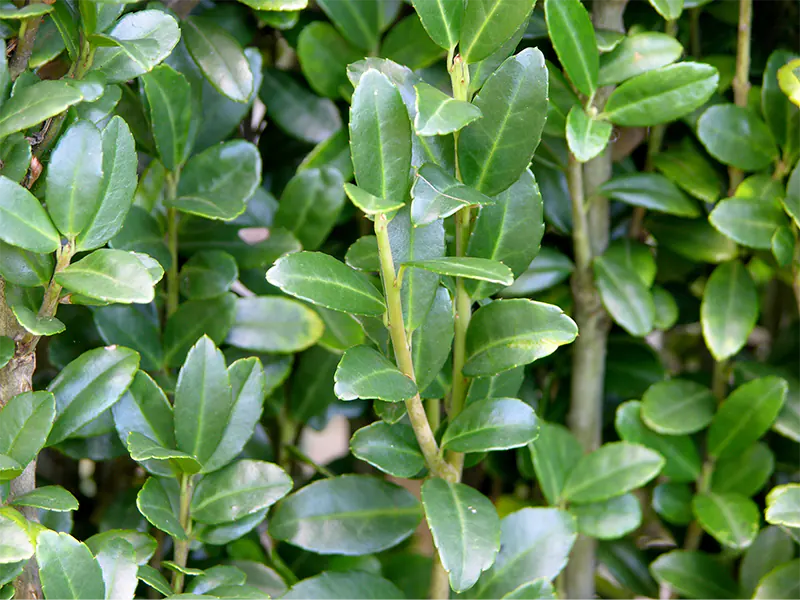
Image source
Here's what you'll find in our Coral bark
Japanese maple bonsai species guide:
Quick Info Sheet for the Japanese Holly
🌞 – Full sunlight all year, shade protection on hottest days, protect from frost
💦 – Water when soil becomes dry, don’t let it dry out
🍏 – Every week in summer and spring, don’t feed in winter
✂️ – Prune back two leaves once four leaves grow on a new shoot in warmer months
🎍- Every two to three years
🐛 – Moths, spider mites, vine weevil
🥜 – Cuttings and seeds
🏠 – hedges, decorations
Japanese Holly Scientific Classification
- Clade: Angiosperms
- Clade: Eudicots
- Clade: Asterids (Asters)
- Order: Aquifoliales (Holly)
- Family: Aquifoliaceae (Holly)
- Genus: Ilex (Holly)
- Species: I. crenata (Japanese Holly)
Information on the Japanese Holly
The Japanese Holly is a gorgeous, evergreen tree or shrub within the holly family, Aquifoliaceae. It’s native to many Asian countries besides Japan, such as Taiwan, China, and Korea. They love growing in forests or thickets where there’s a low wetland with plenty of water. In particular, they love living in the low valleys surrounding mountains.
The scientific genus name has a special origin. Called Ilex, it stems from the Holm Oak tree with a classification name of Quercus ilex. The reason the Holly genus borrows the oak’s species name is due to how similar the leaves are to one another. It’s easy to misidentify the Japanese Holly based on the leaves alone.
There are many ways people grow the Japanese Holly, besides as a bonsai. They’re used as hedges in landscaping around properties and are ideal as topiaries. The branches and leaves are easy to style, which is why it’s usually grown along fences around the borders of homes. Bees love the Holly flowers, which is the number one method of pollination for the species.
What the Japanese Holly Looks Like
If you’ve never seen one before, you may be wondering how to identify a Japanese Holly. We usually check the leaves, flowers, and fruit or seeds to identify this species separately from the others in the genus. Here’s what to look out for.
Leaves
Japanese Holly leaves have an alternate design with a simple formation. They have elliptical or ovate shapes, but some may even be oblong-lanceolate. The color is dark green with a length of 0.5 to 1.25 inches. The leaves are usually crowded along the stems. You may see small serrations along the edges.
The underside of the leaves has blackish dots where the pellucid glands are. Some people use the leaves in flower arrangements. The dark leaves remain green throughout winter, but the bonsai tree may drop some of them just before the new spring growth.
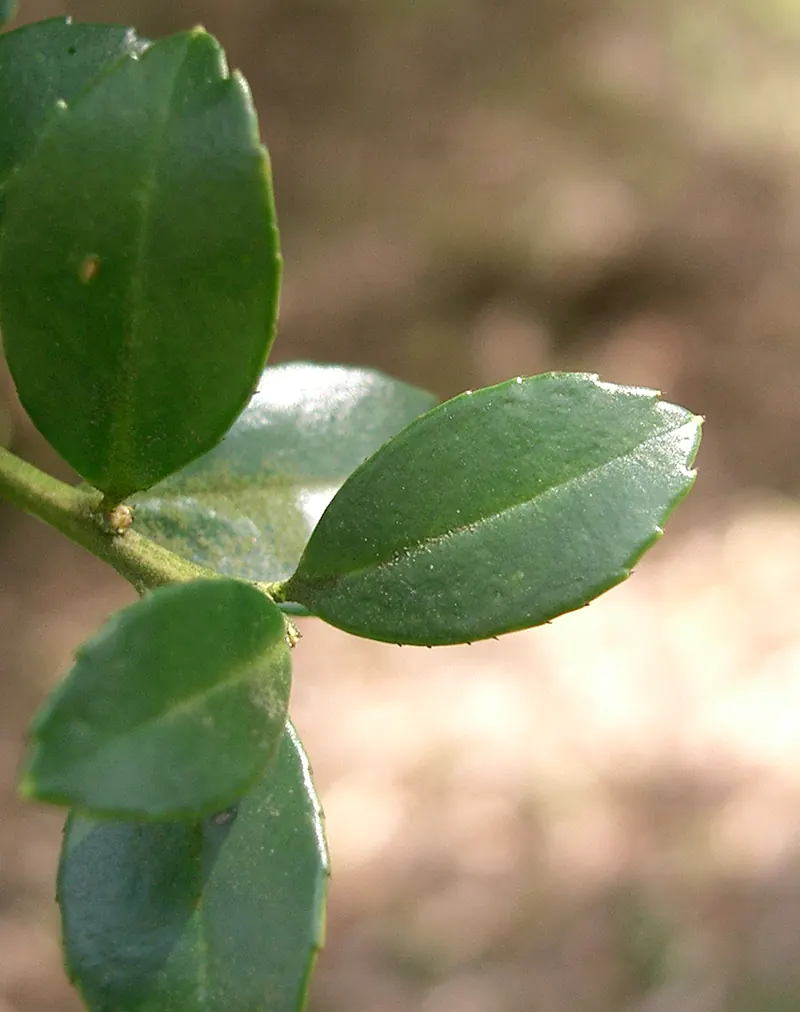
Flowers
Japanese Holly flowers are small, about a quarter of an inch in diameter. The greenish-white flowers are fragrant and appear in spring in clusters of about one to three flowers. The staminate is solitary in leaf axils when it comes to the present season’s growth.
The flower colors are either green or white, depending on the variant. You’ll generally find four or five petals per flower, while the flowers extend beyond each leaf node. When they grow in clusters on your bonsai, they present a stunning display that looks like small stars.
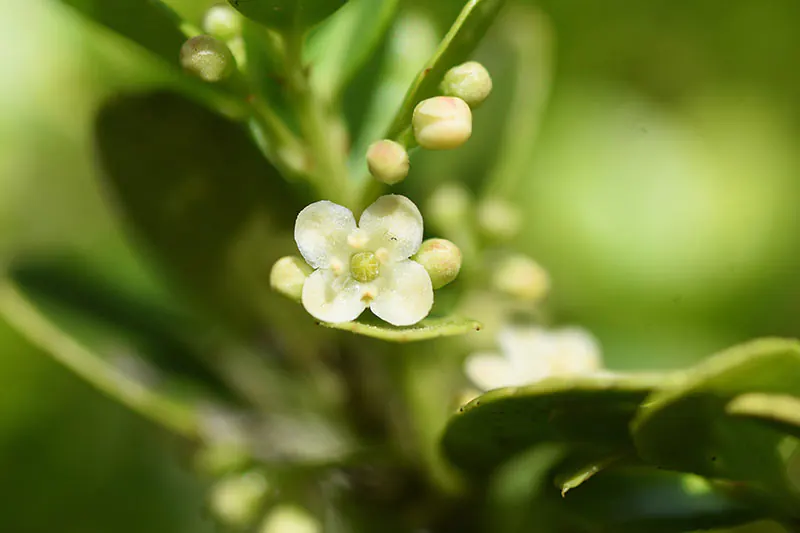
Fruit/Seed
The fruit of the Japanese Holly is a black drupe fruit that you only find on pollinated female plants. They usually appear between autumn and winter, and they’re a quarter inch long. The reason you may not see them so well on your tree or bonsai is that they’re usually hidden under the leaves, but they do put on a stunning display.
Each fruit has about four seeds that look like small brown husks less than 2 mm in diameter. You’ll need to clean the fleshy parts off the seeds if you want to use them for propagation, but generally, cuttings work better.
Different Japanese Holly Varieties
While the Japanese Holly is a species of its own, there are plenty of varieties you can buy and grow. It means you can design a stunning Japanese Holly bonsai display with several types and not just rely on one.
Here are some of the more popular Japanese Holly varieties and the chief characteristics that set them apart:
- Compacta: has smaller black fruit
- Convexa: the fruit is the size of a pea
- Drops of Gold: the leaves are variegated and have a golden appearance; the structure also spreads out more
- Geisha: looks similar to boxwood, and it has small yellow berries
- Golden Gem: a male variant with stunning golden yellow leaves; it only grows about two feet high
- Green luster: has deep green leaves and is usually the one used for hedges
- Hoogendorn: has a slow growth rate and doesn’t need much water or pruning
Caring for your Japanese Holly Bonsai
With your mind filled with Japanese Holly information, we know you’ll want a bonsai now. While the tree will survive on its own in the wild, the same can’t be said about the small tree in your pot. It will need your delicate care, so make sure to check the details below.
Where to place your Japanese Holly for optimal sunlight
Your Japanese Holly will love plenty of sunlight all year round, so it’s ideal as an outdoor bonsai tree. Try to find a spot that can provide some side during the hottest part of the day so that the leaves don’t burn from the heat. If you can design an overhead shade that allows sunlight in the morning time, that would be ideal.
In winter, it can withstand only a bit of frost. We recommend building a frame that lets in light without the frost or cold affecting it. Also, it doesn’t like cold, harsh winds in winter. If you plan to bring it inside for the winter, make sure it has loads of direct sunlight to maintain those lush, green leaves.
Watering and humidity requirements
Since you’ll be giving your Japanese Holly tons of sunlight, you’ll want to make sure you water every day during the warmer seasons. You may remember we said it loves living in wetlands along the mountains. Well, you need to ensure the soil never dries out, as it may hurt the roots and further development.
You’ll also need to make sure humidity levels remain high. If you live in an area with dry climates, you may want to invest in a bonsai humidity tray. When winter comes, you only need to water when the soil feels dry, maybe once every third day depending on how warm it is.
Fertilizing and feeding your Japanese Holly
Your Japanese Holly will be growing fast and furious during spring and summer with so much sunlight and water. If you’re using a liquid fertilizer, we recommend feeding your bonsai once a week with watering. The solid food can be applied once every month or two months, depending on how quickly it dissolves.
While it’s an evergreen tree, your Japanese Holly still needs some rest in winter. You can still feed it in autumn so it can store food for the winter but in lower quantities. Also, don’t feed your tree in winter so it knows it’s time to recover for the spring ahead.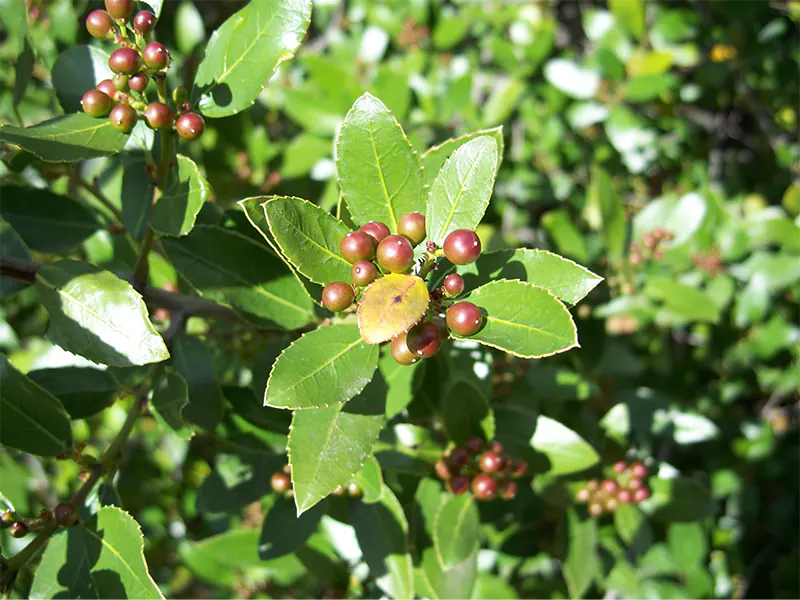
Pruning and shaping
The best time to prune and shape your Japanese Holly is early spring to early summer. You don’t want to be trimming your bonsai too late into the summer if you want decent flowers to appear. Also, you stand a better chance of fruit showing if you stop pruning by the end of spring.
You can also do some design maintenance in winter if you want to get rid of unsightly branches or lengthy stems that don’t suit the bonsai style you cultivated. For ideal stratification, wait until you have about four sets of leaves and then cut back to only two leaves on the branch. New stems will appear, and you can repeat the process.
When it comes to wiring, you need to be careful not to wrap it too tightly. The bark is fragile and can easily be damaged. We recommend you use the clip-and-grow technique instead, which we briefly mentioned above. Let it grow a certain length and then cut back to a few leaves.
How to repot your Japanese Holly
You’ll need to repot your Japanese Holly every two years. Take the small tree out of the bonsai pot and see how much space there is still for the roots to grow. If it takes up the entire container, it’s time to repot.
Feel free to remove about a quarter of the root length so that you can place it in the same pot. If you want, you can upgrade to a larger bonsai pot should you be aiming for a taller or wider tree. Use a standard mix with pumice so that there’s sufficient drainage in the soil. The ideal potting time is early spring as soon as you see new buds appearing.
Common Issues with the Japanese Holly
Some of the more common pests you’ll find with the Japanese Holly are spider mites, leaf-miner moths, and vine weevils. We recommend using an organic insecticide to deal with these or speak to your local bonsai store for a solution. Spraying once a week should help keep these pests away from your precious tree.
The Japanese Holly doesn’t usually succumb to fungi and mold. If you only water when the soil is dry, then you shouldn’t see any issues with root rot. With plenty of sun and ventilation, there also won’t be any problems with powdery mildew or mold. The main issue you’ll need to watch for is damage to the leaves from wild winds or scorching hot afternoons.
Various Ways to Propagate the Japanese Holly
You may not be happy with paying a large amount just to own a Japanese Holly bonsai. If you know of trees in your area, there are ways you can propagate them and make your own bonsai. Just make sure you have permission for any of the below actions from whoever owns the tree.
Seeds
Using seeds to propagate a Japanese Holly isn’t the preferred method, but it is possible. The reason no one favors it is that it takes almost two years for the seed to germinate. For those that lack patience, cuttings are the preferred method to use.
If you’re determined to grow your Japanese Holly from seed, then collect the seeds in autumn when the fruit is ripe. Rinse them in water and wash any pulp off to prevent mold from forming. You’ll need to use a soft paper towel to dry the seeds.
You can now place them in a standard growing soil mix. It will be winter, so you’ll want to keep them inside where it’s warm. Water the soil as soon as you feel its dry, but you can also place a bag over the container to retain the moisture.
When spring arrives, one of two things may happen. If you’re lucky, the warm sun will cause the seeds to germinate, and then you’ll see the stem appear above the soil. However, the most common occurrence is that nothing will appear, but that doesn’t mean you failed. It just means you’ll need to wait through another winter to see if it grows the next spring.
Cuttings
There are two ways you can propagate Japanese Holly cuttings into new bonsais. The first is via softwood stems taken in spring when you see new growth appear. You dip the cut end in a rooting hormone and place it in the soil, which will help the roots to form. It may take more than one season before you feel any success.
The second method involves hardwood cuttings, which you need to take in late autumn, early winter when the Japanese Holly is still dormant and resting. The same rule applies, taking a cutting with rooting hormone and placing it in the soil. You should see some root growth by summer.
Most people report that hardwood cuttings taken in winter are more successful for propagating Japanese Holly trees than the softwood technique. Also, you need to ensure that there are some leaves at the top to absorb sunlight while it forms new roots. Ensure the soil remains wet during the growing period.
Air Layering
Another method you can use to propagate your Japanese Holly is via air layering. You can perform this task in late winter when the tree is still dormant, and just before spring when new growth appears. The simple air layering technique works here, so you won’t need to adjust it.
First, remove a strip of bark about 12 inches from the tip of the branch, or more. Also, clear any leaves for about 4 inches from where you stripped the bark. Make sure you also cut into the cambium layer so that the Holly is forced to make roots.
Take some peat moss and a transparent bag and wrap them around the opening. You can use wires or ties to keep the moss and bag in place, while aluminum foil prevents any heat from building up within the structure you created.
Within a year or so, you should see a clump of roots among the peat moss in the bag. Remove the wrappings and cut the branch under the roots. Prepare your new bonsai container and soil, and place the roots neatly within the soil without hurting any of them. Keep the soil wet at all times.
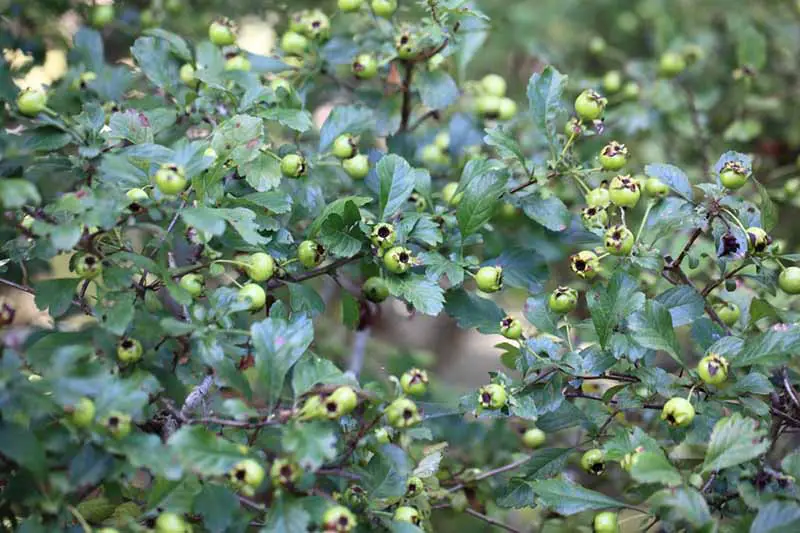
Where to buy a Japanese Holly bonsai
We know many of you would prefer to buy a Japanese Holly bonsai without having to wait decades for it to reach maturity. You have different options at your disposal besides heading to a bonsai nursery. Here are our top recommendations:
- Local stores: It may surprise you to hear this, but you can buy a tree from your local plant store instead of a bonsai nursery. Many of them have young trees that you can reduce to the size of a bonsai. The most challenging aspect is removing the black bag and most of the soil before pruning the roots to fit in the bonsai pot.
- Markets: Some cities have markets and stalls on weekends that sell almost anything under the sun. There are people standing there selling bonsais and small plants, having spent years growing them. If you’re in luck, someone will have a Japanese Holly for sale.
- Online stores: Your best bet is to look at an online store like Amazon. You won’t waste time heading to a market or local shop, only to find they don’t have Japanese Holly in stock. Also, you can compare prices and quality, while also checking the reviews at the end.
- Social media: Do yourself a favor and join a few bonsai groups on Telegram, Facebook, Instagram, and other platforms. You can quickly ask the members if anyone knows where to buy a Japanese Holly in your area. Someone may even be willing to sell theirs to you at a really low rate.
- Bonsai events: This option is our favorite. We love attending bonsai events and seeing if we can find really old bonsai trees at a good price. You can view various styles and wiring techniques and see which ones really speak to you. However, some trees are only there for display purposes.
- Open fields: We’re back to propagating your own bonsai, so this doesn’t have to do with buying a Japanese Holly. If you know of an area in your region where this species grows pretty well, you can take a few cuttings to grow at home. Just make sure you don’t collect from a nursery or exhibition, as the owners won’t be too impressed.
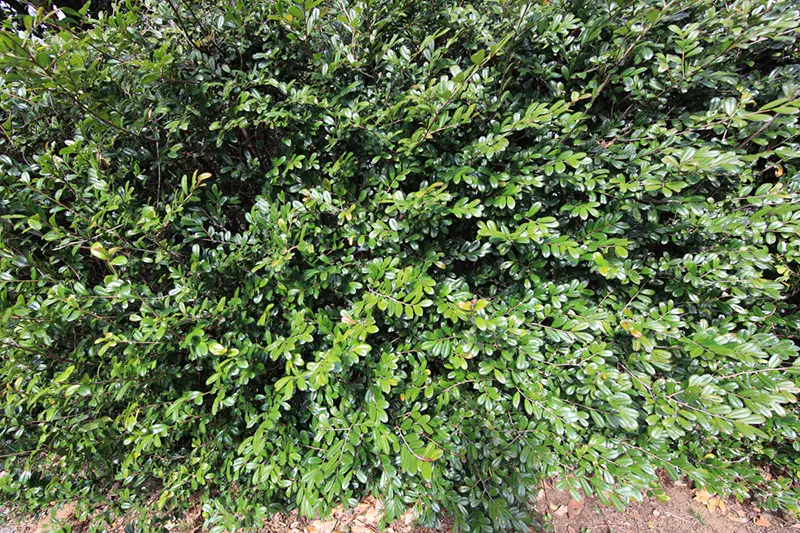
Common Questions on the Japanese Holly
We’ve now given you almost everything you need to know about the Japanese Holly. You should have enough details to get you started, even as a beginner. In this section, we’ve collected most of the popular questions people ask about the species with our responses. Feel free to contact us if you have any other queries.
How tall does a Japanese holly get?
A mature Japanese Holly can reach heights of between 3 to 10 ft tall, while it can stretch as wide as 3 to 8 ft wide. Of course, it depends on the variety and how much freedom the tree has to grow in the area. When you’re only talking about bonsais, you have the choice of how tall you want it to grow, from 2 inches to 1 foot.
You’ll want a size that matches the bonsai style you’re aiming for. With cascading, you’re aiming more for length than height, as it drops down below the pot. Also, you have to be careful with a bonsai forest, as the Japanese Holly likes to extend its branches to the side.
Is Japanese holly the same as boxwood?
Hetz’s Japanese Holly is the variant that is more often than not confused with boxwood, but “Geisha” is another culprit. The leaves and colors look similar, and both are used for ornamental purposes. When someone sells you a Japanese Holly, make sure they aren’t fooling you with a common boxwood instead. There are minor differences, and the pollination methods aren’t the same.
How fast does a Japanese holly grow?
Most Japanese Holly variants grow at a rate of 6 to 12 inches per year. Of course, we’re talking about trees in the wild where they have the freedom to reach for the skies as they wish. As a bonsai, you’ll dictate how much of that growth remains on the tree.
You also need to bear in mind that pruning your bonsai tree will affect how much it grows in the year. The more you trim, the smaller the leaves and branches become. Also, it might not bloom if you prune your Japanese Holly in summer. Keep your design maintenance for the winter.
Does Japanese holly make a good hedge?
When you grow your Japanese Holly as a hedge around your home, it has better defense against frost and strong winds, as it has better support. You can prune it to the shape you want around your fence, and the green foliage looks stunning for the entire year.
If you’re really interested in trying something new, you can make a topiary with your bonsai, or even make a small hedge as an artistic expression. Mind you, the hedge style isn’t one that’s caught on for bonsais as yet, but that doesn’t mean you can’t give it a try at home.
Do Japanese holly lose their leaves in winter?
Since the Japanese Holly is an evergreen tree, it won’t lose its leaves in winter. You’ll see stunning green leaves all year round, but you need to make sure you provide the proper care. If your bonsai is losing its leaves, then something is wrong.
Of course, there are always exceptions to the rule. For one, extremely cold temperatures may cause your Japanese Holly to lose its leaves. It’s best to bring it inside where it’s warmer so it doesn’t die. Also, it may shed some of its winter furs before the new spring arrives.
Is Japanese holly invasive?
While many people grow the Japanese Holly as a hedge or in gardens, there are some states and countries that list it as an invasive species. They may grow slowly, but they spread wildly across the lands thanks to diverse pollinations and distribution methods. You’ll need to see if it’s listed as an invasive species in your location.
You won’t need to worry about it when you grow it as a bonsai. It’s only invasive if you plant it in the ground and let it grow without proper pruning or care. In your small container, no one will be worried about its invasive nature, as you’ll have it contained in your home.
Do Japanese holly have deep roots?
The main taproot of the Japanese Holly will dig deep if the soil is dry and it has to hunt for water. Along the way, it develops shallow fibrous roots that drink water from the upper soil level. So basically, you don’t have to worry about the roots being too deep in the ground, especially for hedges.
When it comes to bonsais, a shallow, wide pot will do for the Japanese Holly. The fibrous roots will remain under the soil without going too deep, while the taproot will rest along the bottom soil. If you find the soil is too clogged with the fibrous roots, it’s time to repot.
Is boxwood or holly a better plant?
The reason most people compare the Japanese Holly with boxwood is that both are useful when it comes to hedges. You can also grow both as bonsais. There’s one significant difference that makes the boxwood slightly better: it can handle colder regions better and is more resistant to strong winds.
If you check the hardiness zones, the Japanese Holly is suitable for zone 6 through 9. Boxwood is the same, but you can also grow it in zone 5, which shows you how well it can handle colder temperatures.
Does Japanese holly need full sun?
Yes, the Japanese Holly needs direct sunlight for most of the day for every season of the year, even in winter. The best place is outside where it can absorb as much of the sunlight as possible. The only issue you need to watch out for is in the heat of summer during peak afternoons, where it would be best to have some form of shade.
You can make a shade cloth stand overhead that only blocks the worst sunlight during the peak afternoon. In this way, the sunlight will still reach it in the early morning and late afternoon.
How do you prune Japanese holly?
There are two times you should prune your Japanese Holly: mid-spring and late winter. For the middle of spring, you’ll mostly be removing oversized leaves from your bonsai or any branches you don’t want. It’s also a good idea to see if there are any dead twigs you need to take out from the structure.
In late winter, you can do some design pruning before the next spring. Here’s a good time to remove branches that don’t work with the style you planned. It’s also a good chance to draw your bonsai if you’re into that.
Why is my Japanese holly turning brown?
We call your mind to the fact that Japanese Holly trees love wetland conditions along mountain valleys. If your bonsai has leaves turning brown, it means you aren’t providing enough water. You’ll need to increase the frequency of watering, maybe supplying it twice a day in summer instead of once.
If you feel that your Japanese Holly is drinking the water really quickly, you can add a water tray underneath. In this way, you can check how quickly it slurps up the water from the bottom. Feel the soil with your fingers to check how dry it is. Give it a few days to see if any new leaves are appearing.
Is Japanese holly an evergreen?
Yes, the Japanese Holly is an evergreen. You’ll have green leaves for the entire year, and you shouldn’t see any leaves falling during winter. However, it also depends on how cold the winter becomes in your area. If you leave your bonsai tree outside when there’s frost, you’ll notice how badly it affects the Holly.
Should there be signs of the cold affecting it, you can bring the Japanese Holly inside for the winter. You’ll need to make sure it still receives enough sunlight and watch out for mold or fungi formations.
Can Japanese holly be cut back?
You can cut back a Japanese Holly branch all the way to the stem if you wish. It handles pruning quite well, especially for ramification. You can also cut back to only two leaves, and then watch as new shoots appear on either side. It’s a healthy way for building the upper structure.
The best time to cut back is in late winter before the new growths appear. During this resting period, the Japanese Holly won’t get a fright when you suddenly remove massive branches. Also, it won’t affect the development of flowers and fruit in the summer.
Is Japanese holly poisonous to dogs?
While the leaves and branches are safe, the berries of the Japanese Holly tree are toxic to dogs, other animals, and children. These aren’t the berries you can safely ingest, so it’s best to steer clear of them. The main issue is with trees in the yard that drop the berries, but dogs are smart enough not to eat them off the ground.
Thankfully, it’s only mildly toxic, so it shouldn’t be fatal to your pooch. As a bonsai, you should have your Japanese Holly high enough that your dogs can’t reach it. You can also create a catchment area to collect berries as they drop in autumn.
How far apart should you plant Japanese holly?
How far apart you plant your Japanese Holly will depend on your purpose. If we’re talking about a hedge, it should be four feet apart. Shrub borders should be about eight feet apart. Of course, our main focus on this site is for bonsais, which is a different matter.
We don’t recommend growing them in a bonsai forest formation, as the leaves extend too wide to the sides. If you do, you’ll have to estimate how far apart to plant them based on how much you’ll prune the branches. Two to four inches should be good enough.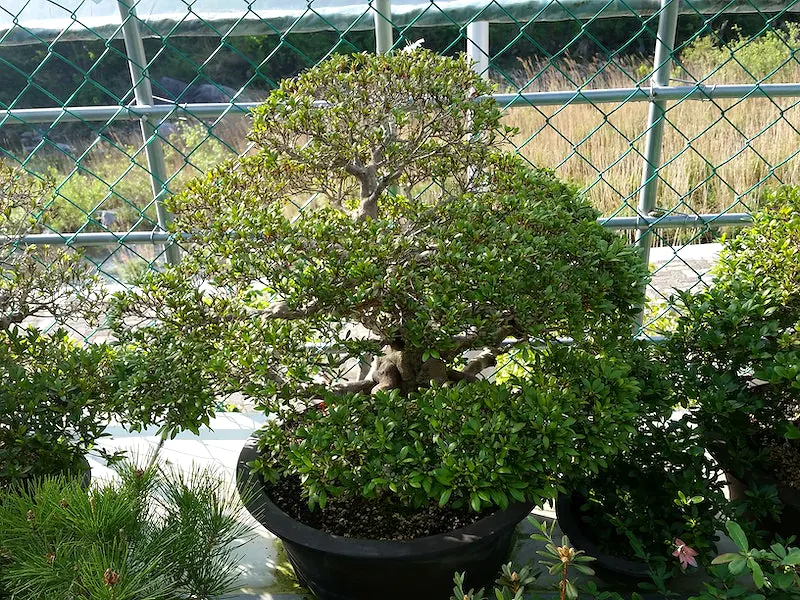
Final Thoughts on the Japanese Holly
If this ultimate guide on the Japanese Holly doesn’t help you care for it as a bonsai, I don’t know what will. There’s so much detail here, and you can create a checklist at home for when you lose your way. I know what it’s like to have a hundred bonsais and need to worry about each one’s requirements.
Should you find anything that isn’t covered, please let us know in the comments. We’re always striving to update our content with the latest information, and we’ll happily add anything that you need more information on.




